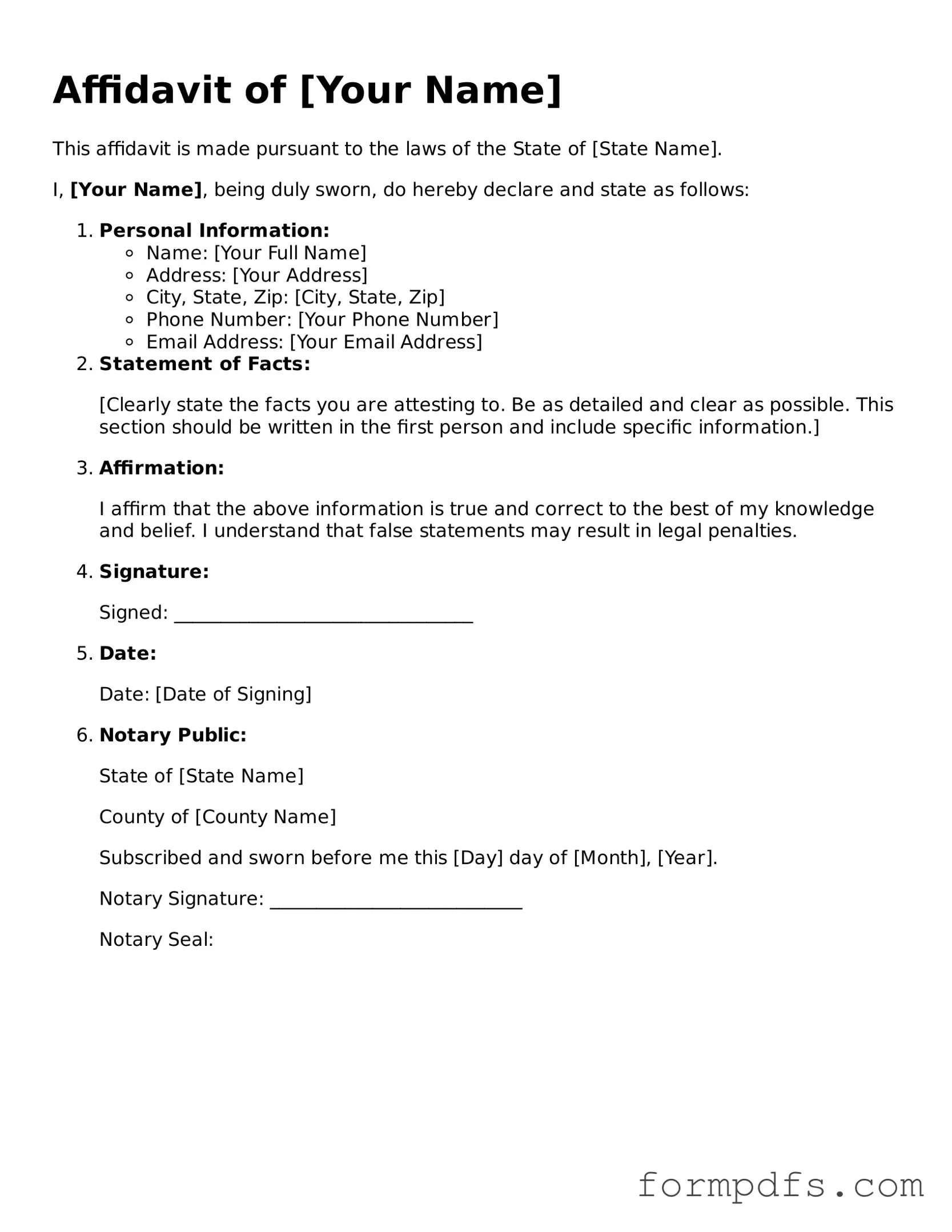The Affidavit form serves as a critical tool in legal proceedings, providing a written statement of facts that the affiant, or the individual making the affidavit, swears to be true. This form is often used in various contexts, including court cases, real estate transactions, and financial matters, where a declaration of truth is necessary to support claims or actions. Typically, an affidavit includes essential elements such as the affiant's personal information, the specific facts being attested to, and a statement affirming the truth of those facts under penalty of perjury. It may also require the signature of a notary public, who verifies the identity of the affiant and ensures the document's authenticity. Understanding the nuances of the Affidavit form is vital, as it not only serves as evidence but also carries legal weight, influencing outcomes in disputes and transactions. In many instances, the clarity and precision of the information provided can significantly impact the effectiveness of the affidavit in achieving its intended purpose.
